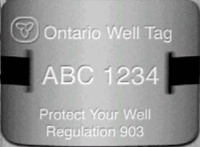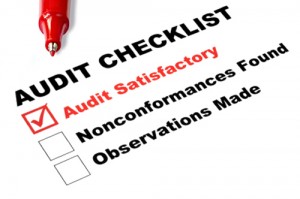Feature Article
If you could save your client several hundred dollars on a drilling job by simply filling in a few forms, would you be interested? That’s what we can do for you when we file a cluster record.
Well drilling in Ontario is regulated by Regulation 903 (the “Water Well Regulation”), made under the Ontario Water Resources Act. With a few exceptions, the Regulation requires that well drillers submit a drilling record to the Ministry of Environment(MOE) for every well, regardless of whether it is for geotechnical, environmental or water supply purposes. Identification tags must also be attached to the wells. The paperwork to file the records takes time, as does tagging each well. Multiply these steps by several wells drilled during a project (particularly if it has spanned several days) and the costs quickly add up.
 Fortunately, the Regulation offers us an alternative – the opportunity to file a “Cluster Record”. This is a single record, and single tag, which applies to a cluster of wells that are located on the same or adjacent property. A cluster record reduces the level of effort required for tagging and recording – and consequently, our costs. One of the critical things we need in order to provide this cost savings is a signature from the owner(s) of the property(ies) on which the wells are installed. Unfortunately, getting the property owner’s signature for well clusters is our most difficult task when filing well records.
Fortunately, the Regulation offers us an alternative – the opportunity to file a “Cluster Record”. This is a single record, and single tag, which applies to a cluster of wells that are located on the same or adjacent property. A cluster record reduces the level of effort required for tagging and recording – and consequently, our costs. One of the critical things we need in order to provide this cost savings is a signature from the owner(s) of the property(ies) on which the wells are installed. Unfortunately, getting the property owner’s signature for well clusters is our most difficult task when filing well records.
When we arrive onsite, you will receive a package requesting several pieces of information that we use for filing the well record. If your technician can provide that on the site, our crew can spend most of their time drilling, and at the end of the job, use only a short time to review the information that you have provided. This reduces the amount of time we spend at the site, and reduces the costs to your client. One of the items in the information package is a form to be signed by the owner of each property where one or more wells will be installed.
The signature is proof for the MOE that each property owner has been informed that there is a well on the property. If you think the signature is not likely to be available, please tell us before we get to the job site. In that case, the drill crew will simply tag each well and file a record for each – just as we did before cluster records became an option in the Regulation. If you don’t tell us – until after the job is over – that the property owner’s signature will not be forthcoming, it means that we must send staff back to the job site to tag each well, and file multiple records – a time consuming and costly exercise that probably wasn’t in the original project budget.
The signature aspect of the cluster record seems like a nuisance, but there is some rationale behind it. When wells are tagged individually, each property owner receives a copy of the well record in the mail. When a cluster record is filed, only one property owner receives a copy of the well record – if there are multiple properties involved in the cluster, the other owners may never know that there are wells on their property. By asking for signatures, the MOE ensures that all property owners are aware of wells on their own property. A knowledgeable owner is more likely to protect and maintain the well.
Some consultants have simply signed the Owner’s Permission form themselves, acting on behalf of their client. By doing so, they prevent the MOE from ensuring that the property owner has been told of the well. This practise has already been the grounds for at least one MOE staff visit to a consultant who, according to previously filed cluster records, appeared to be the owner of a large number of properties across Ontario!
If you can talk with your client in advance and get the owner’s authorization form signed, we will be able to file a cluster form and lower your project costs. If you can’t get a signature – just let us know before the job, and our staff will be happy to help out by doing individual tagging and by coming prepared to your site with a sufficient number of tags for all the wells that might possibly be drilled.
More information about well tagging, record filing and Regulation 903 is available in our FAQ on the Water Well Regulation, located here:
Reg 903 FAQ

